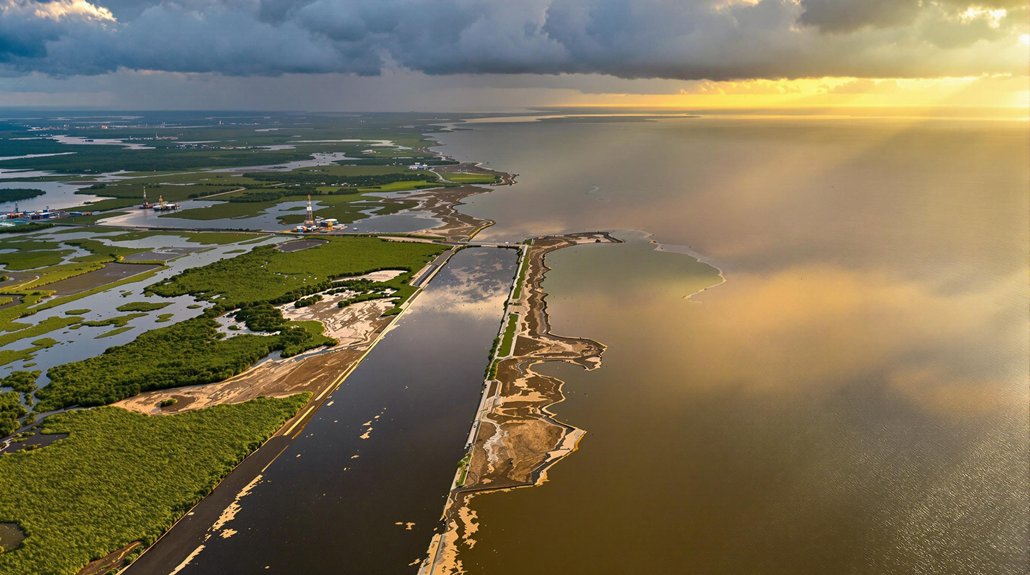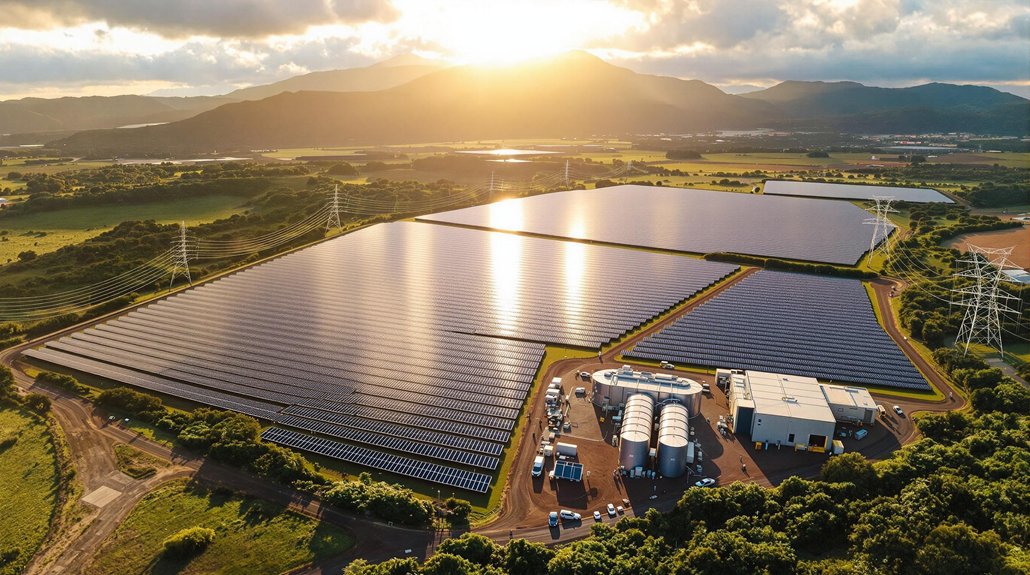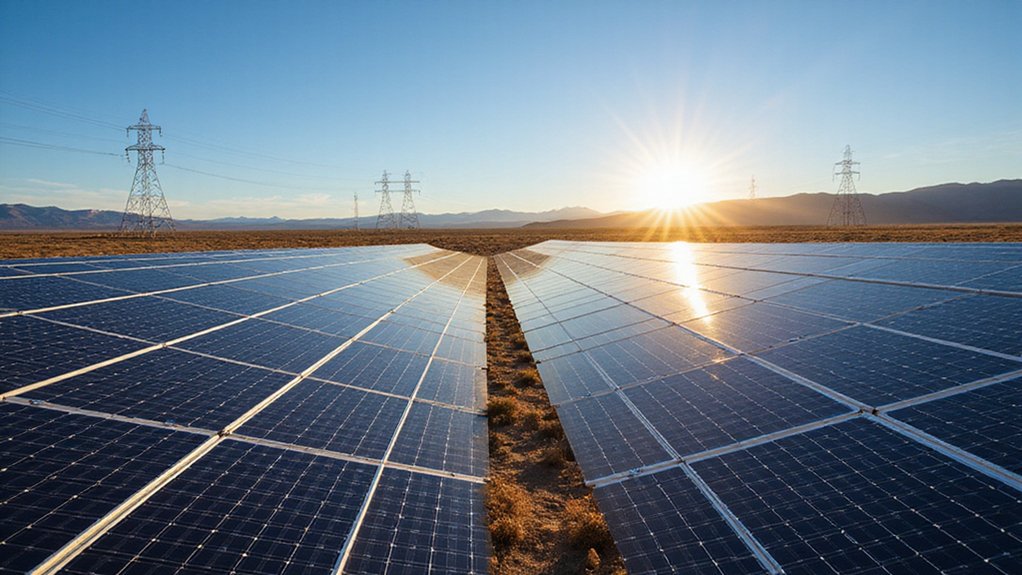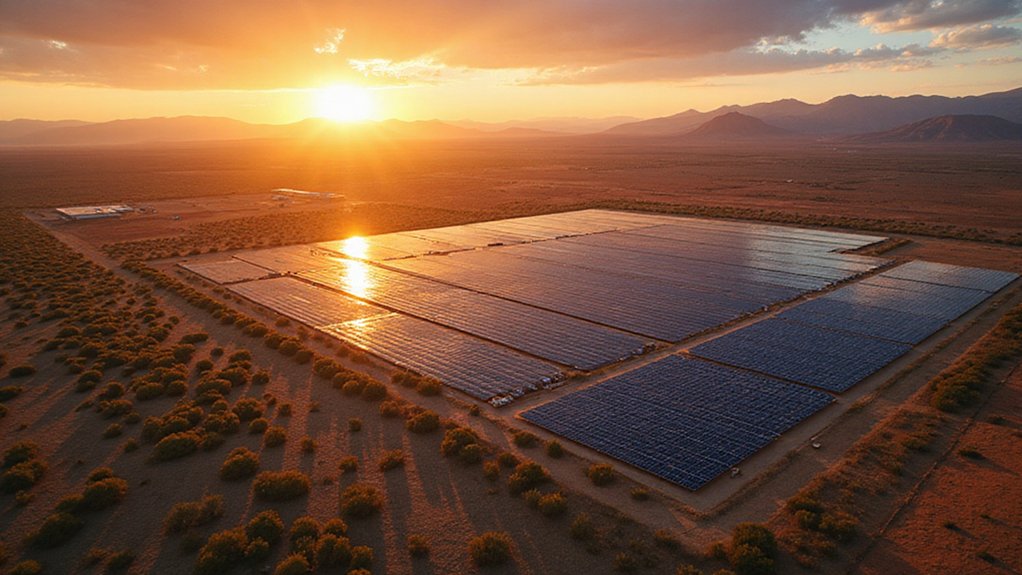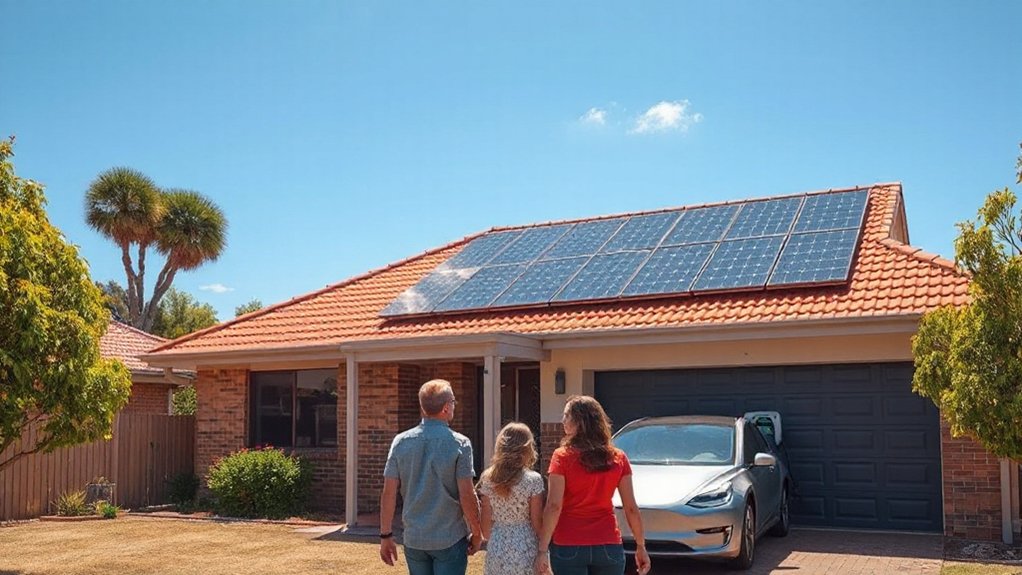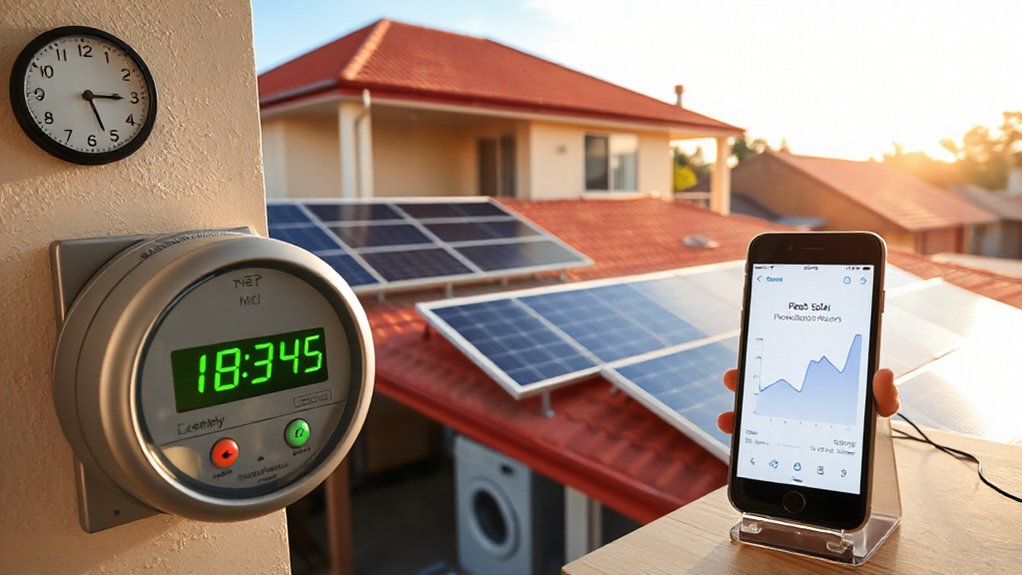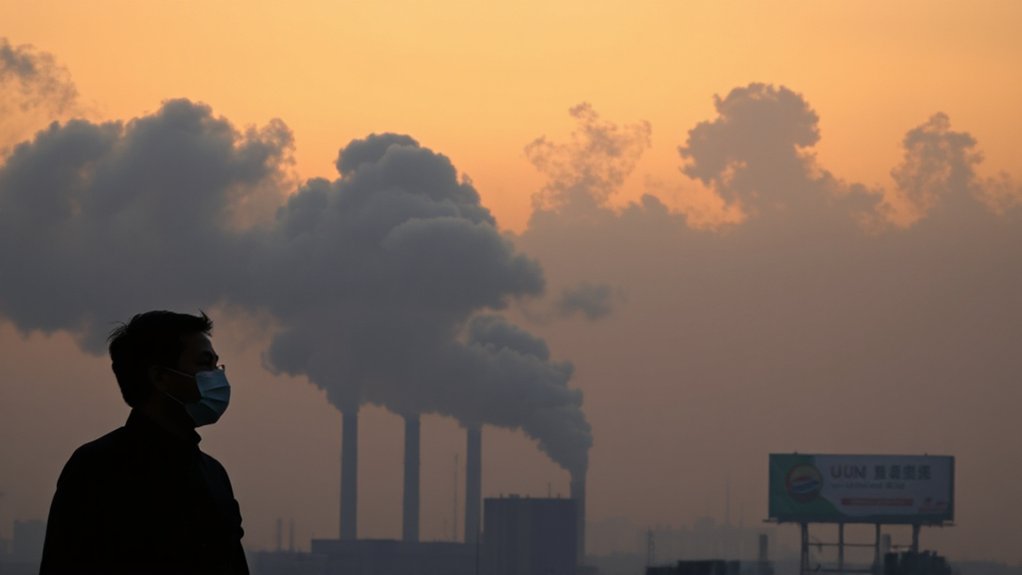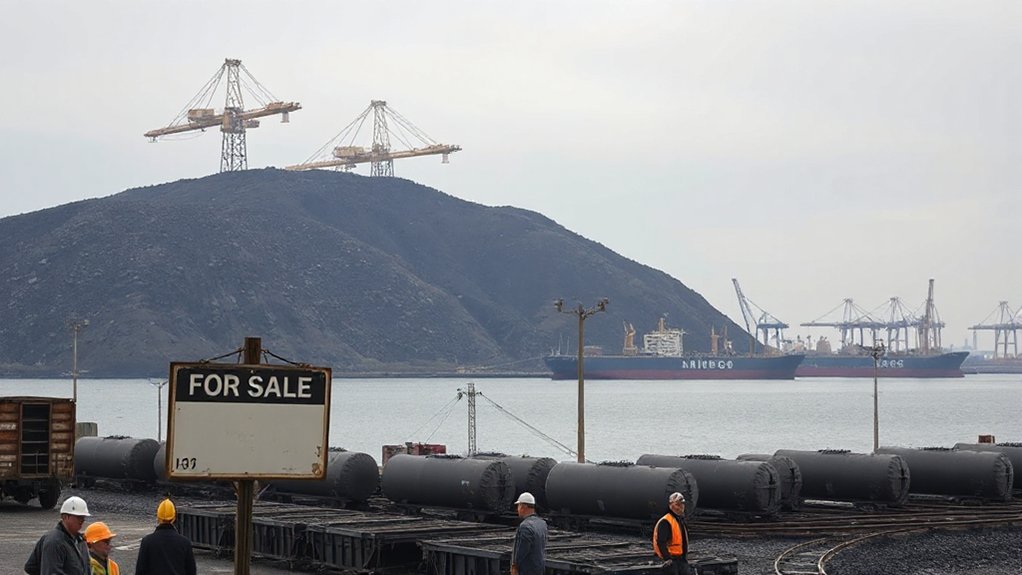Desert solar projects face significant challenges despite their promise. High temperatures reduce panel efficiency and accelerate degradation. Sand accumulation requires constant cleaning while harsh conditions complicate construction and maintenance. Large installations can disrupt fragile desert ecosystems and potentially alter local climate patterns. The lack of infrastructure and high transmission costs further limit economic viability. These golden plains aren’t as ideal for green energy as they first appear.
While solar farms in deserts seem like an ideal solution for clean energy, they face serious challenges that cast doubt on their practicality. Desert solar installations can actually increase local temperatures by absorbing and re-emitting solar energy as heat. This happens because solar panels replace the naturally reflective sand, reducing what scientists call the “albedo effect.” These temperature changes might disrupt weather patterns, potentially reducing rainfall in distant ecosystems like the Amazon rainforest.
The harsh desert environment creates efficiency problems too. Solar panels work best at 25°C, but desert temperatures often soar much higher, reducing power output. Sand and dust constantly accumulate on panels, requiring frequent cleaning. Without regular maintenance, energy production drops considerably. The extreme heat also speeds up panel degradation, shortening their useful life. Covering just 20% of the Sahara with solar panels would increase local temperatures by 1.5 degrees Celsius.
Deserts lack basic infrastructure needed for large-scale energy projects. Building roads, storage facilities, and transmission lines to connect remote solar farms to cities requires massive investment. The harsh working conditions make it difficult to find and keep workers. Water scarcity complicates construction and maintenance, especially for cleaning panels. Damaging sandstorms can crack panel glass, adding to maintenance headaches.
The economics don’t always make sense either. These projects need huge upfront capital. Current battery technology can’t efficiently store desert solar energy at the scale needed. While promising technologies like perovskite solar cells might improve efficiency to 30%, they’re still developing. Raw material shortages for advanced batteries create additional constraints. The significant transmission costs from remote desert locations to consumption centers further impact project viability. Unlike fossil fuels which receive global subsidies worth hundreds of billions annually, desert solar projects often struggle to secure comparable financial support.
Deserts do offer vast unused land that doesn’t compete with farms or cities. But the sandy terrain creates unstable foundations for solar structures. Desert ecosystems are also more fragile than they appear. Large construction projects can disrupt specialized plants and animals that have adapted to these harsh conditions over thousands of years.
These combined challenges suggest that desert solar farms might not deliver on their promise as the perfect solution to our clean energy needs.

